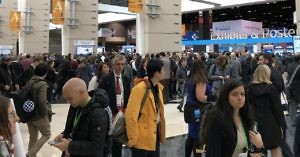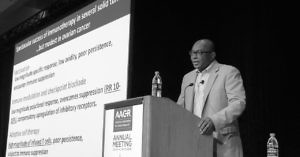An up and coming IO target to watch out for
Summer time always seems a good opportunity to explore new cancer targets or approaches on BSB and we’ve covered quite a few interesting concepts over the last couple of years.

ASCO18 Gems from the Poster Halls
This particular approach is an up and coming immuno-oncology target that I noticed is quietly gaining increased interest amongst pharma companies and not all the usual players either.
Consider typing in [target] + cancer in PubMed…
What I got was one single paper in 2000, nothing until 2006 (two more papers), then one to four new ones a year dribbled out until 2014 when nine appeared, followed by a big jump to 17 in 2015, over 20 the following year, then finally more than 30 last year.
At the current rate there will likely be 40–50 such articles in 2018, making for a typical sigmoid growth rate of interest. Boom!
Clinical trials (montherapy and combinations) are already in early phase studies in the clinic, so this is a good time to take stock and look at progress to date. It also makes for interesting reading when put together as a whole!
To learn more from our latest thought leader interview and get a heads up on our oncology insights, subscribers can log-in or you can click to gain access to BSB Premium Content.
This content is restricted to subscribers





 There’s a lot of heavy science and jargon inherent in this niche that often frightens off people, but that need not always be the case.
There’s a lot of heavy science and jargon inherent in this niche that often frightens off people, but that need not always be the case.

 What I wanted to do here was take a step back after the dramatic 1L NSCLC session and pull together some pros and cons that oncologists will be thinking about going forward.
What I wanted to do here was take a step back after the dramatic 1L NSCLC session and pull together some pros and cons that oncologists will be thinking about going forward.